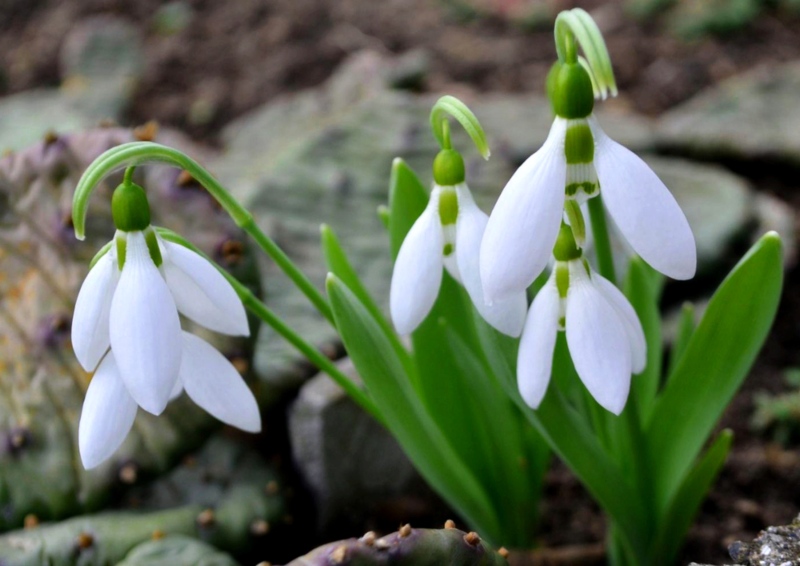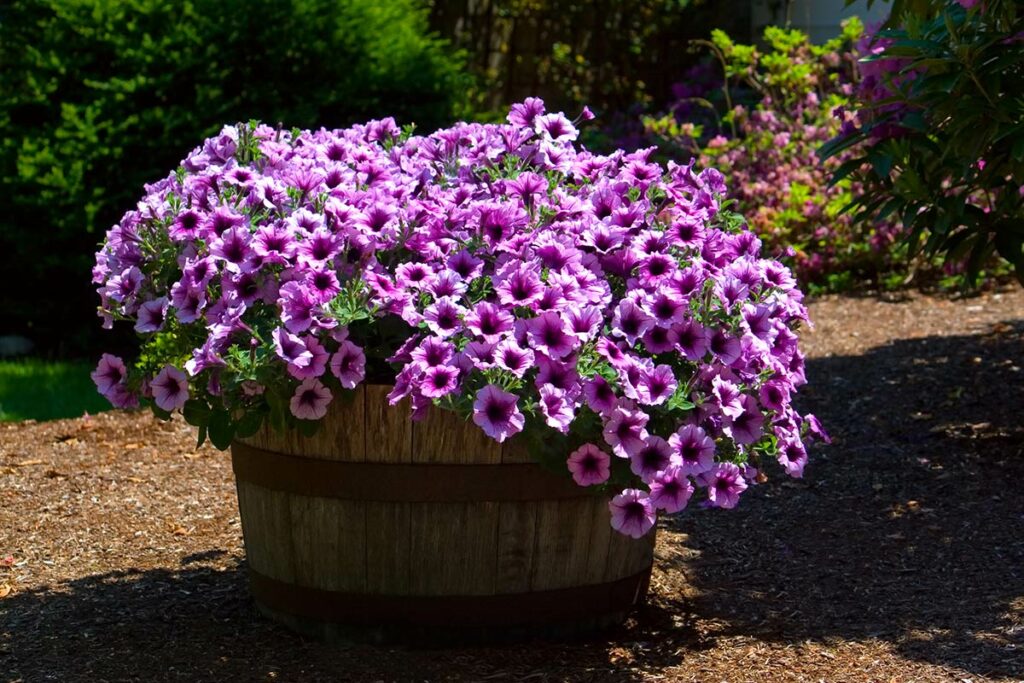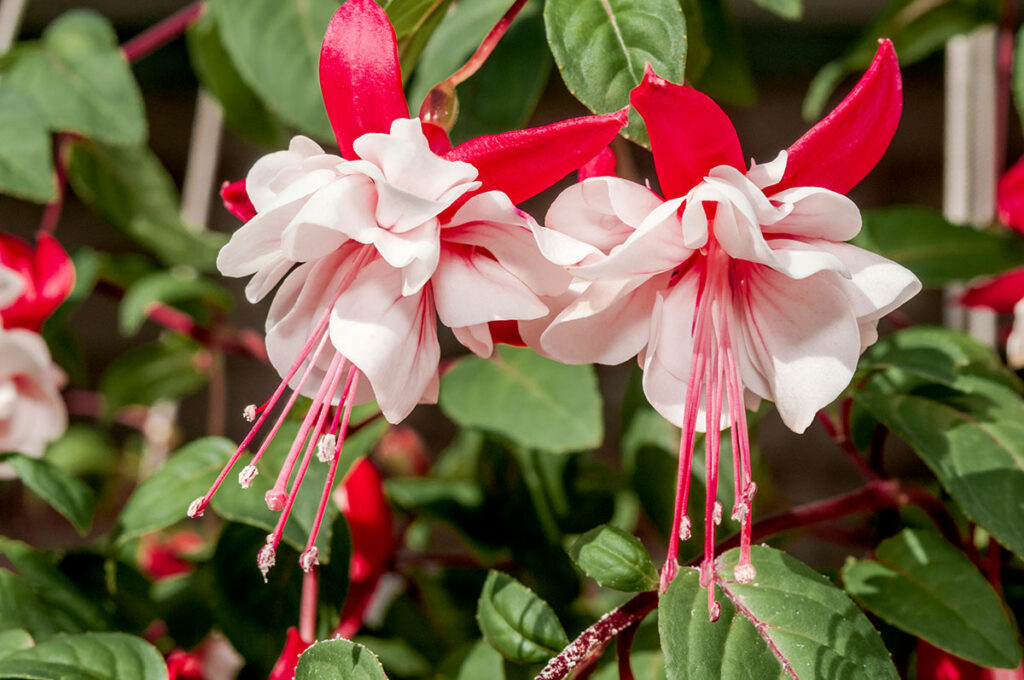
Fuchsia plants are known for their vibrant colors and stunning, delicate blooms. As a gardener, you may find yourself eager to optimize the growth and flowering of your beautiful fuchsia plants.
Fertilizing these stunning plants is an essential aspect of proper care that can significantly impact their overall health and appearance.
Choosing the right fertilizer for your fuchsia plants can make all the difference. In addition to understanding which products will be most effective, scheduling your fertilizing routine is crucial.
With the right approach, you’ll quickly notice your fuchsia plants thriving and producing even more impressive blossoms.
So let’s delve into some essential tips for fertilizing your fuchsia plants.
Understanding Fuchsia Fertilization Needs
Fertilizing your fuchsia is essential for its growth and flowering. Your fuchsia needs the right balance of nutrients to thrive. The three key nutrients required by fuchsia plants are nitrogen (N), phosphorus (P), and potassium (K). These nutrients work together to promote healthy growth, vibrant blooms, and overall plant strength.
When choosing a fertilizer for your fuschia, look for a balanced one with a similar N-P-K ratio, such as 10-10-10, 15-15-15, or 20-20-20. This ensures that your fuchsias will receive the appropriate amount of necessary nutrients. You can find these balanced fertilizers in both organic and chemical forms depending on your preference.
In addition to the N-P-K nutrients, fuchsias also benefit from micronutrients like magnesium, iron, and zinc. If you notice symptoms such as yellowing leaves or weak flowering, it could be due to a deficiency in these micronutrients. Many balanced fertilizers will include these micronutrients, but you can also use specific supplements if needed.
Fuchsias will need regular fertilization during the growing season, typically from spring to early fall. Start fertilizing your fuchsia plants once you begin to see new growth in the spring, following the specific instructions and amounts indicated by the chosen fertilizer. Continue feeding your fuchsia every 2-4 weeks until the end of the growing season.
Remember that over-fertilizing can be harmful too. It can lead to weak growth and susceptibility to diseases or pests. Be sure to follow the recommended amounts and frequency found on your fertilizer packaging to avoid any issues. By understanding the fertilization needs of your fuchsia plants, you will be well-prepared to provide them with the nutrition they need for beautiful, healthy growth.

Choosing the Right Fertilizer
When it comes to fertilizing your fuchsia, choosing the right fertilizer is crucial. Here, we will discuss not only the differences between organic and chemical fertilizers, but also balanced versus low phosphorus options. By keeping these factors in mind, you can provide the best care for your fuchsia plants.
Organic vs. Chemical
Organic fertilizers are derived from natural sources, such as compost, manure, or bone meal. These fertilizers often provide a slow, steady release of nutrients to the soil, which can be beneficial for fuchsia’s overall health.
- Benefits of organic fertilizer include:
- Improved soil structure and water retention
- Slow release of nutrients
- Environmentally friendly
Chemical fertilizers are synthesized in a lab, providing a faster way to deliver nutrients to your plants. These fertilizers typically show results sooner than organic options, but they can also lead to potential nutrient buildup if used excessively.
- Benefits of chemical fertilizer include:
- Quick results
- Customizable nutrient ratios
- Readily available in various forms
Balanced vs. Low Phosphorus
Fuchsias prefer nutrient-rich soil, making it essential to choose a fertilizer that supplies the nutrients they need. Balanced fertilizers contain equal amounts of nitrogen, phosphorus, and potassium (N-P-K). These fertilizers provide general care for your fuchsia, encouraging growth and flowering as needed.
- Recommended N-P-K ratios for balanced fertilizers:
- 10-10-10
- 14-14-14
- 20-20-20
Low phosphorus fertilizers, on the other hand, have a reduced phosphorus (P) content while maintaining standard nitrogen (N) and potassium (K) levels. These fertilizers are ideal for fuchsia plants that already have a decent amount of phosphorus in their soil.
- Recommended N-P-K ratios for low phosphorus fertilizers:
- 20-10-20
- 15-5-15
Your choice of balanced or low phosphorus fertilizers will depend on your plants’ specific needs and the existing nutrient levels in your soil. Conduct a soil test before making a decision to ensure optimal fuchsia health and growth.
Remember, your fuchsia plants deserve the best care possible. By selecting the appropriate fertilizer, whether organic or chemical, balanced or low phosphorus, you’re giving your plants the nutrients they need to thrive.
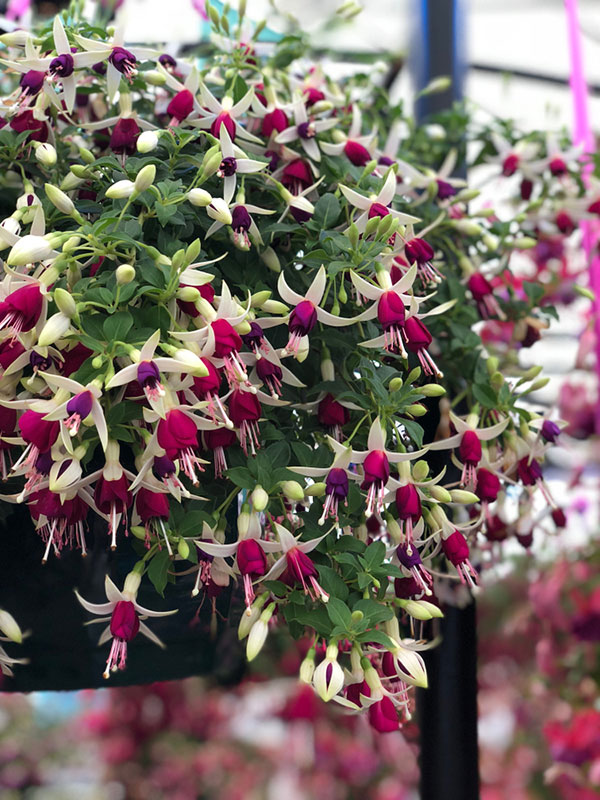
When to Fertilize Fuchsia
Fertilizing your fuchsia plants at the right times is essential for promoting healthy growth and beautiful blooms. To help you stay on top of your fuchsia care, here are some tips on when to fertilize your plants.
Start fertilizing your fuchsia when you see new growth in the early spring. This initial feeding will provide your plants with the essential nutrients they need to develop strong roots and lush foliage. Be sure to use a balanced, water-soluble fertilizer that’s specifically formulated for fuchsia plants at this time.
As the season progresses, you’ll want to continue fertilizing your fuchsia plants every 3-4 weeks. This will ensure they have a steady supply of nutrients throughout the growing season. In addition, make sure to follow the instructions and dosage provided on the fertilizer label to avoid overfeeding your plants.
In the summer months, when your fuchsia plants are producing plenty of blooms, you could switch to a low-nitrogen, bloom-boosting fertilizer. This will help your plants produce more flowers and maintain their colorful displays. Be sure to stick to the same feeding schedule – every 3-4 weeks – during these warmer months.
Finally, it’s crucial to stop fertilizing your fuchsia plants as the fall season approaches. This will allow them to begin preparing for dormancy and their rest period during the winter months. Keep watering them and providing the necessary care during this time, but refrain from adding any more fertilizer.
By following these guidelines on when to fertilize your fuchsia plants, you can keep them healthy, vibrant, and blooming all season long. Just remember to choose the right kind of fertilizer and stick to the recommended schedule, and your fuchsia plants will reward you with their captivating beauty.

Methods of Fertilization
Soil Application
Fertilizing your fuchsia through soil application is one way to ensure the plant maintains its vibrant color and healthy growth. You can simply apply a balanced, granular fertilizer to the surrounding soil every 4-6 weeks during the growing season. Make sure to follow the suggested dosage found on the product packaging.
Alternatively, you can consider using a slow-release fertilizer. These products are designed to gradually release nutrients over time, reducing the need for frequent applications. Just remember to keep an eye on your fuchsia to determine if additional nutrients are necessary.
Foliar Sprays
Foliar sprays are another effective method for fertilizing your fuchsia. They are applied directly to the leaves, which helps plants absorb nutrients more quickly. This is particularly useful when addressing any nutrient deficiencies in your fuchsia.
To use a foliar spray, mix a water-soluble fertilizer according to the package directions and apply it to the leaves using a spray bottle. Be sure to spray both the top and underside of the leaves for maximum coverage. Ideally, you should apply the spray early in the morning or late in the afternoon to prevent leaf burn.
While soil application and foliar sprays have their own benefits, you can also combine both methods to ensure your fuchsia is well-nourished. Just keep in mind to maintain a friendly tone and avoid exaggerated claims in your approach. Focus on the health and happiness of your plant by fertilizing it with care.
Common Fertilizing Mistakes to Avoid
When it comes to fertilizing your fuchsia plants, there are a few common mistakes you’ll want to avoid. Following these guidelines will help promote healthy growth and beautiful blooms.
Over Fertilizing
One common mistake is over-fertilizing your fuchsia plants. While it’s crucial to provide the necessary nutrients, too much fertilizer can harm their roots and foliage. To avoid this issue:
- Follow the instructions on the fertilizer package carefully.
- Start with half the recommended dose and gradually increase it over time.
- Monitor your plants for signs of over-fertilization, such as yellowing leaves or stunted growth.
Incorrect Timing
Another mistake to avoid is fertilizing your fuchsia plants at the wrong time. Proper timing helps ensure your plants get the nutrients they need when they need them the most. Keep these tips in mind:
- Fertilize your fuchsia plants in the early spring, as they start to produce new growth.
- During the growing season, fertilize once every four weeks.
- Do not fertilize during the winter months, as fuchsia plants go dormant and don’t require additional nutrients.
By avoiding these common fertilizing mistakes, you can help your fuchsia plants thrive and produce stunning blooms for you to enjoy.
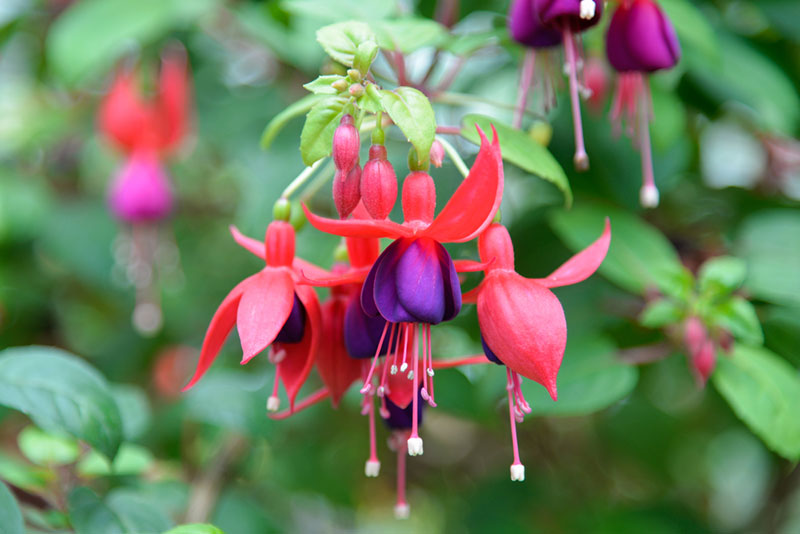
Monitoring and Adjusting Fertilization
Soil Testing
To ensure your fuchsias receive optimal nutrition, it’s essential to test your soil periodically. You can purchase a soil testing kit or enlist the help of a professional lab. By understanding the soil’s nutrient levels, you can adjust your fertilization routine accordingly. For example, you may need to add more nitrogen or phosphorus to promote healthy growth.
Fuchsia Health Indicators
Keep an eye on your fuchsia’s appearance and growth patterns as they can also serve as indicators of nutrient imbalance. Here are some signs to watch for:
- Yellowing leaves: If you notice the leaves turning yellow while veins remain green, this suggests an iron deficiency. You might need to apply an iron supplement to rectify this issue.
- Stunted growth: If new growth appears slow or weak, your fuchsia may be lacking nitrogen or phosphorus. Incorporating a balanced fertilizer or one with higher levels of the required nutrient can help stimulate growth.
- Poor flower production: If your fuchsia struggles to produce an abundance of blossoms, it might not be getting enough potassium. Ensure you’re using a fertilizer with a sufficient potassium content to encourage beautiful blooms.
Be sure to monitor your fuchsia’s wellbeing and adjust your fertilization program as needed to provide them with the perfect environment to thrive.



